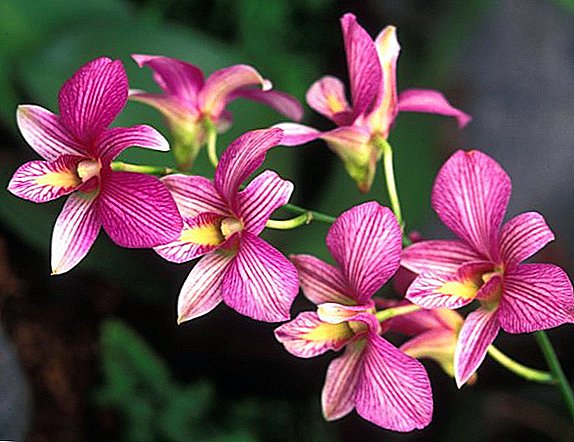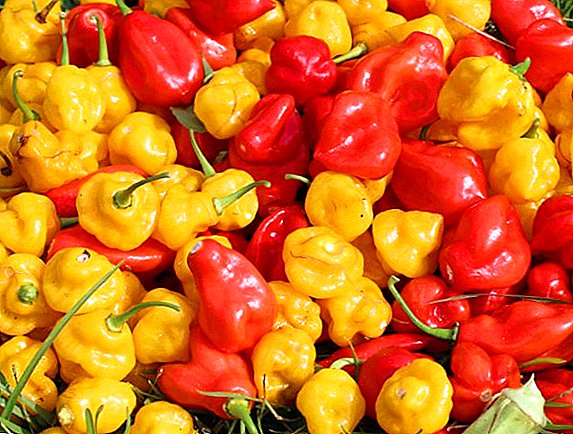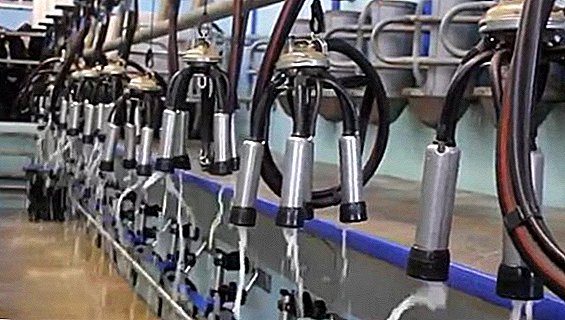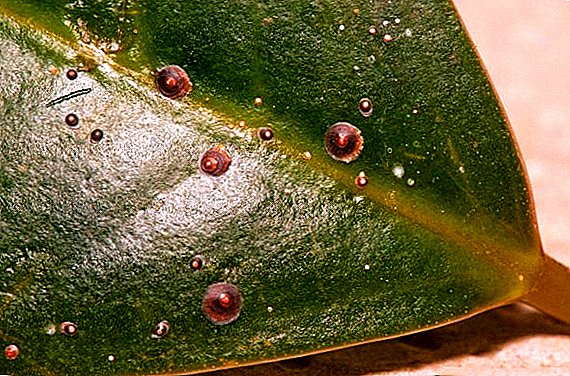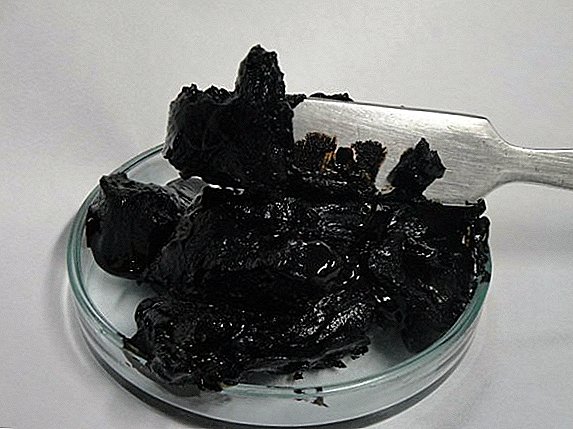 Humates are salts of potassium or sodium, which are obtained from humic acid. HUMATE and acid are the main constituent of the soil, its concentrate is humus. In turn, humus is responsible for almost all biochemical processes occurring in the soil. The formation of humus occurs as a result of the decomposition of organic substances, and from it under the influence of water, oxygen and microorganisms, humates are obtained. One of the varieties is potassium humate, a universal organic fertilizer that helps increase soil fertility.
Humates are salts of potassium or sodium, which are obtained from humic acid. HUMATE and acid are the main constituent of the soil, its concentrate is humus. In turn, humus is responsible for almost all biochemical processes occurring in the soil. The formation of humus occurs as a result of the decomposition of organic substances, and from it under the influence of water, oxygen and microorganisms, humates are obtained. One of the varieties is potassium humate, a universal organic fertilizer that helps increase soil fertility.
Potassium humate: description and composition
Potassium humate is a fertilizer with a large amount of humic acids (above 80%), its application accelerates the growth and development of various plant species. The action of humate is aimed at reducing the acidity of the soil, as well as increasing its general indicators of the effective influence on plants - vegetable, fruit, garden and home flowers. Potassium humate, in addition to humic acids, includes peptides, natural growth stimulants, antibiotics, enzymes, amino acids.
 Humates stimulate metabolic and biochemical processes in the soil; they are components of peat, coal, silt, and some types of soil. At the end of the 18th century, scientist Ahard Franz isolated pure humate from peat. Humates are produced now, getting them from soil, peat, sapropel, brown coal, lignosulfate. Appearance - dry powder dark brown, there is also a liquid concentrate.
Humates stimulate metabolic and biochemical processes in the soil; they are components of peat, coal, silt, and some types of soil. At the end of the 18th century, scientist Ahard Franz isolated pure humate from peat. Humates are produced now, getting them from soil, peat, sapropel, brown coal, lignosulfate. Appearance - dry powder dark brown, there is also a liquid concentrate.
The use of humate is in the treatment of seeds, cuttings, seedlings, as well as various parts of adult plants.
Important! Potassium humate is not a "panacea" for plants, yet it is a top dressing. At the same time, it is worth waiting for the best results from its use after using the main techniques of growing plants, and it is also important that the soil is alkaline and podzolic, but not acidic.Potassium humate is not used at the same time with fertilizers, which contain phosphorus, with calcium nitrate, because it forms insoluble compounds. The first, in about 3-5 days, the humates are introduced into a well-moistened earth, and after that - fertilizers.
Potassium humate will not have the expected effect even in fertile soil - black soil.
Types of potassium humate
Potassium humate is a natural and ecological fertilizer produced from peat-rich minerals. Most often gardeners and gardeners use potassium humate in liquid form, it is most convenient to use, and also received the highest ratings and reviews, for example, from the well-known TV presenter of the agricultural work program Octyabrina Ganichkina.
Liquid potassium humate
 This fertilizer has a dark brown color; it is produced from peat by extracting useful substances and trace elements. Convenient to use, popular because of its effectiveness.
This fertilizer has a dark brown color; it is produced from peat by extracting useful substances and trace elements. Convenient to use, popular because of its effectiveness.
Potassium humate in liquid form - it is a concentrate, it is diluted in cool water, depending on the purpose of use, The instructions for its use are as follows:
- To improve the general condition of the soil, 0.1-0.2% of the total volume of liquid potassium humate is taken.
- To fertilize plants by spraying, watering, soaking seeds, you need to take 0.01% of potassium humate from the total volume.
Important! Humate helps to eliminate toxic chemicals and nitrates from plants and their fruits.Liquid potassium humate can be used together with organic or nitrogen fertilizers.
Potassium humate powder
Humate potassium in dry form it is used for general strengthening of plant immunity, acceleration of their growth and ripening of fruits: the powder is also diluted in water, instructions for use are always on the packaging of fertilizer. The positive effect of potassium humate on the development of the plant root system, as well as on the amount of chlorophyll and vitamins in different cultures has been proven.
 The use of dry potassium humate for the soil accelerates the development of microflora in the soil, respectively, the formation of good humus occurs faster, thus the yield increases to 50%, and fruit ripening occurs earlier. The soil does not lose in its characteristics, but becomes more fertile, and heavy metals are derived from it.
The use of dry potassium humate for the soil accelerates the development of microflora in the soil, respectively, the formation of good humus occurs faster, thus the yield increases to 50%, and fruit ripening occurs earlier. The soil does not lose in its characteristics, but becomes more fertile, and heavy metals are derived from it.
Did you know? One kilogram of potassium humate powder replaces one ton of humus.
Potassium humate "Prompter"
This type of potassium humate with trace elements is obtained from humic sapropel (bottom sediments of freshwater bodies). Potassium humate "Prompter" is universal. Fertilizing this fertilizer should be made twice a month from March to September, and from October to February - once a month and a half. Preparation of a solution of this potassium humate is made immediately before use, it is better not to store it for future use.
Useful properties of potassium humate for plants
The main property of potassium humate can be called its growth-stimulating effect for various plant species. Mainly fertilizer affects the root system, prompting it to develop and thereby strengthening the entire plant as a whole.
Potassium humate has the following beneficial properties: 
- safety and environmental friendliness;
- restoration and improvement of soil characteristics;
- acceleration of ripening of seeds and fruits (for 1-2 weeks);
- yield increase;
- increased germination;
- strengthening the root system;
- increasing plant immunity and disease resistance;
- decrease in the need of plants for nitrates and their quantity in fruits;
- increase the duration of the storage of the crop;
- improving plant resistance to low temperatures;
- positive impact on any culture.
How to dilute potassium humate, instructions for use for different crops
Depending on the purpose of use, potassium humate is diluted in different ways, instructions for use vary.
For soaking, dilute 0.5 g (approximately one third of a teaspoon) of potassium humate per liter of water. The seeds or bulbs of plants are placed in the solution for a period of 8-12 hours to 2 days, the cuttings are lowered by two thirds of the length for a time of about 14 hours.
Leaf spraying is done with a weaker solution. - 3 g of potassium humate is diluted in 10 liters of water.
Preparation of fertilizer for irrigation is as follows: 1 tablespoon of potassium humate dissolves in 10 liters of water - used for seedlings, and also appropriate to use at a time when the plant is flowering, or only its buds appear.
Important! Potassium humate is also used after treatment with pesticides for detoxification. To do this, 50 g of fertilizer in dry powder is mixed with sand or ash and scattered on 10 square meters.
For vegetable
 Vegetable cultures are treated with potassium humate before sowing, as well as during the growing season - the application varies from two to six times. For irrigation, take 50-100 ml of fertilizer per 10 liters of water and consume 3-10 liters per square meter, depending on the type of plant. Sprayed with the same solution and a half to three liters per 100 square meters.
Vegetable cultures are treated with potassium humate before sowing, as well as during the growing season - the application varies from two to six times. For irrigation, take 50-100 ml of fertilizer per 10 liters of water and consume 3-10 liters per square meter, depending on the type of plant. Sprayed with the same solution and a half to three liters per 100 square meters.
Beets, cabbage, zucchini, carrots will require treatment with potassium humate 4 times per season. Potatoes need to be soaked or sprayed before planting. Potassium humate is used 3-4 times to feed cucumbers and tomatoes.
Seeds are soaked at the rate of 100 ml of liquid humate per liter of water for 24 hours, tubers and bulbs - for 10-12 hours.
For green
These crops need to be processed two to six times per season. The solution (50-100 ml of potassium humate per 10 liters of water) is used as irrigation - from three to ten liters per square meter. As a result, the flavor is preserved, the germination rate increases, the level of resistance to unfavorable environmental factors and diseases in green cultures increases.
For fruit and berry
 Potassium humate for this type of crop is used in the treatment of saplings, roots and other parts of trees, shrubs, and herbaceous plants (by spraying). It is better to apply fertilizer with the use of pesticides and herbicides.
Potassium humate for this type of crop is used in the treatment of saplings, roots and other parts of trees, shrubs, and herbaceous plants (by spraying). It is better to apply fertilizer with the use of pesticides and herbicides.
Top dressing with humate is carried out in early spring before the flowering period, when fruit ovaries are formed, as well as during the period of ripening.
Did you know? Potassium contributes to the accumulation of sugars in the fruit, so the fruits, berries when using such dressing become sweeter.Prepare a solution (50-100 ml of potassium humate liquid per liter of water), the use of which is to soak the seeds for a day, bulbs, tubers - for 10-12 hours. When watering the same amount of humate is dissolved in 10 liters of water, and consumes 3-10 liters per square meter. Spraying is carried out at the rate of one and a half to three liters of the specified solution per 100 square meters.
For garden flowers
 Garden flowers are recommended to be fertilized with potassium humate in spring, when the vegetation period begins in perennial plants, and in annuals - in the phase of full sprouting. Then spend from three to six supplements every two to three weeks. Seeds are soaked before sowing for a day, bulbs and tubers for half the time. The solution is prepared as follows - take 50-100 ml of humate per liter of water.
Garden flowers are recommended to be fertilized with potassium humate in spring, when the vegetation period begins in perennial plants, and in annuals - in the phase of full sprouting. Then spend from three to six supplements every two to three weeks. Seeds are soaked before sowing for a day, bulbs and tubers for half the time. The solution is prepared as follows - take 50-100 ml of humate per liter of water.
The same amount of potassium humate is used for irrigation (3-10 liters per square meter) and spraying (1.5-3 liters per 100 square meters), but at the rate of 10 liters of water.
For indoor plants
It is very important to use fertilizer potassium humate for domestic plants, because humus is not formed in a limited space of the pot. Top-dressing with this fertilizer stimulates growth and high-quality flowering in domestic plants. It is carried out in the period when the plants are actively growing, which occurs in March-September: they fertilize 1 time in 10-15 days. In the dormant period from October to February, fertilizing is carried out once a month and a half. Spray the solution at the rate of 5-100 ml of potassium humate per liter of water, making sure that the leaves are completely moist. Watering produce the same solution, well moistening the ground.
The advantages of using potassium humate for growing plants
Summing up, it can be said about potassium humate that this natural fertilizer with a proven effect such as increasing yields, increasing plant growth, improving soil characteristics.
 Potassium humate has a positive effect on various crops and is used for processing vegetables, cereals, grapes, strawberries, raspberries, garden trees and even ornamental plants. The area in which potassium humate is wide enough is the treatment of seeds and tubers, cuttings before sowing or planting, spraying already sprouted plants, supporting them during the flowering period, feeding the root system by watering. In addition, fertilizer has an impact on the soil, increasing its level of fertility.
Potassium humate has a positive effect on various crops and is used for processing vegetables, cereals, grapes, strawberries, raspberries, garden trees and even ornamental plants. The area in which potassium humate is wide enough is the treatment of seeds and tubers, cuttings before sowing or planting, spraying already sprouted plants, supporting them during the flowering period, feeding the root system by watering. In addition, fertilizer has an impact on the soil, increasing its level of fertility.
Potassium humate improves plant resistance to various diseases and pest invasion, contributes to adaptation to the peculiarities of the external environment, weather conditions.
In the complex, using potassium humate with fertilizers containing nitrogen can increase their efficiency and thereby reduce the amount, which will lead to financial savings and improved crop quality.
 The use of potassium humate, which contains humic acids, promotes the removal of pesticides, herbicides, radionuclides and other pollutants. AND this allows you to keep the main qualities of the products, which are grown on the site is safety and naturalness.
The use of potassium humate, which contains humic acids, promotes the removal of pesticides, herbicides, radionuclides and other pollutants. AND this allows you to keep the main qualities of the products, which are grown on the site is safety and naturalness.
Important! The popularity of this fertilizer has led to the fact that it produces a large number of manufacturers, which complicates the choice. Novice gardeners are interested in the difference between humates from each other, for example, potassium humate brand B. This fertilizer is very concentrated, which is convenient if you need to use it for a large number of different crops at different stages of their growing season, as well as when harvesting seeds and preparing them for landing.Potassium humate is a versatile fertilizer widely used to improve soil characteristics, increase crop yields and the overall level of plant cultivation. It is convenient and easy to use, and most importantly, what is fertilizer, as the humate is completely natural, so it is often chosen by gardeners and gardeners for the proper care of diverse crops.



